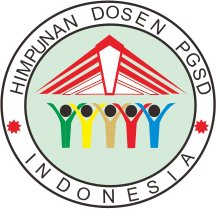Implications of child-friendly school policies in reducing cases of violence against children in elementary schools
Downloads
Downloads
Abdullahi, H. U., Clement, I., & Sunusi, S. A. (2017). Child friendly schools in Nigeria the role of the teacher. International Journal of Education and Evaluation, 3(6), 7–12.
Barth, J. M., Dunlap, S. T., Dane, H., Lochman, J. E., & Wells, K. C. (2004). Classroom environment influences on aggression, peer relations, and academic focus. Journal of School Psychology, 42(2), 115–133. https://doi.org/10.1016/j.jsp.2003.11.004
Bourgault, S., Peterman, A., & O'Donnell, M. (2021). Violence against women and children during Covid-19"”one year on and 100 papers in. Center for Global Development.
Christenson, S. L., Sinclair, M. F., Lehr, C. A., & Godber, Y. (2001). Promoting successful school completion: Critical conceptual and methodological guidelines. School Psychology Quarterly, 16(4), 468–484. https://doi.org/10.1521/scpq.16.4.468.19898
Erdianti, R. N., & Al-Fatih, S. (2019). Fostering as an alternative sanction for juveniles in the perspective of child protection in Indonesia. JILS (Journal of Indonesian Legal Studies), 4(1), 119–128. https://doi.org/10.15294/JILS.V4I01.29315
Erdianti, R. N., & Al-Fatih, S. (2020). Children friendly school as the legal protection for children in Indonesia. Varia Justicia, 16(2), 137–155. https://doi.org/10.31603/variajusticia.v16i2.3725
Ferrell, E. W., Nance, C. N., Torres, A. L., & Torres, S. M. (2014). Using participatory action research to address absenteeism. Action Learning: Research and Practice, 11(2), 201–214. https://doi.org/10.1080/14767333.2014.909184
Gage, N. A., Sugai, G., Lunde, K., & DeLoreto, L. (2013). Truancy and zero tolerance in high school: Does policy align with practice? Education and Treatment of Children, 36(2), 117–138. https://doi.org/10.1353/etc.2013.0011
Hajaroh, M., Purwastuti, L. A., & Rukiyati, R. (2021). Difusi model perumusan kebijakan sekolah ramah anak di kawasan pesisir wisata [Diffusion of child-friendly school policy formulation models in tourist coastal areas]. Jurnal Kependidikan: Penelitian Inovasi Pembelajaran, 5(1), 14–30. https://doi.org/10.21831/jk.v4i2.27238
Hajaroh, M., Rukiyati, R., & Purwastuti, L. A. (2017). Analisis kebijakan sekolah ramah anak di kawasan pesisir wisata [Policy analysis of child-friendly schools in tourist coastal areas]. Andi Offset.
Haris, "ŽHaris, & Al-Fatih, S. (2020). School of intuition as an education for child to prevent corruption in Indonesia. TEST Engineering & Management, 83(3), 11884–11892.
Kearney, C. A., & Graczyk, P. (2014). A response to intervention model to promote school attendance and decrease school absenteeism. Child & Youth Care Forum, 43(1), 1–25. https://doi.org/10.1007/s10566-013-9222-1
Mannathoko, C. (2007). The building of partnerships in child friendly schools. Commonwealth Education Partnerships, 127–129.
Nolan, J. R., Cole, T., Wroughton, J., Clayton-Code, K. P., & Riffe, H. A. (2013). Assessment of risk factors for truancy of children in Grades K-12 using survival analysis. Journal of At-Risk Issues, 17(2), 23–33.
Obaki, S. O. (2017). Impact of classroom environment on childrens social behavior. International Journal of Education and Practice, 5(1), 1–7. https://doi.org/10.18488/journal.61/2017.5.1/61.1.1.7
Orkodashvili, M. (2013). Quality education through Child-Friendly Schools: resource allocation for the protection of children's rights. Revista Romí¢nească Pentru EducaÅ£ie Multidimensională, 5(1), 101–109.
Pangestu, C., Sujati, H., & Herwin, H. (2020). Pengaruh self efficacy dan pengasuhan orang tua terhadap kepercayaan diri siswa [The effect of self-efficacy and parenting on students' self-confidence]. Foundasia, 11(1). https://doi.org/10.21831/foundasia.v11i1.32600
Putri, A., & Akmal, A. (2019). Sekolah ramah anak: Tantangan dan implikasinya terhadap pemenuhan hak anak [Child-friendly schools: Challenges and implications for the fulfillment of children's rights]. Journal of Civic Education, 2(4), 228–235. https://doi.org/10.24036/jce.v2i4.190
Rangkuti, S. R., & Maksum, I. R. (2019). Implementasi kebijakan sekolah ramah anak dalam mewujudkan kota layak anak di Kota Depok [Implementation of child-friendly school policies in realizing a child-friendly city in Depok City]. Publik (Jurnal Ilmu Administrasi), 8(1), 38–52. https://doi.org/10.31314/pjia.8.1.38-52.2019
Saputri, D. I., & Herwin, H. (2020). The effect of the spirit of nationalism and cinta tanah air on the self independence of elementary school students. JMIE (Journal of Madrasah Ibtidaiyah Education), 4(1), 114. https://doi.org/10.32934/jmie.v4i1.162
Schaps, E., & Solomon, D. (2003). The role of the school's social environment in preventing student drug use. The Journal of Primary Prevention, 23(3), 299–328. https://doi.org/10.1023/A:1021393724832
Sheldon, N. (2007). The school attendance officer 1900–1939: Policeman to welfare worker? History of Education, 36(6), 735–746. https://doi.org/10.1080/00467600701622220
Sujarwo, S., Kusumawardani, E., Prasetyo, I., & Herwin, H. (2021). Parent involvement in adolescents' education: A case study of partnership models. Cypriot Journal of Educational Sciences, 16(4), 1563–1581. https://doi.org/10.18844/cjes.v16i4.6013
Thornton, M., Darmody, M., & McCoy, S. (2013). Persistent absenteeism among Irish primary school pupils. Educational Review, 65(4), 488–501. https://doi.org/10.1080/00131911.2013.768599
UNICEF. (2005). Child friendly schools manual. Unicef.
Wright, C. A. H., Mannathoko, C., & Pasic, M. (2009). Child friendly schools manual. Unicef.
Wuryandani, W., & Herwin, H. (2021). The effect of the think–pair–share model on learning outcomes of Civics in elementary school students. Cypriot Journal of Educational Sciences, 16(2), 627–640. https://doi.org/10.18844/cjes.v16i2.5640
Yosada, K. R., & Kurniati, A. (2019). Menciptakan sekolah ramah anak [Creating child-friendly schools]. Jurnal Pendidikan Dasar Perkhasa: Jurnal Penelitian Pendidikan Dasar, 5(2), 145–154. https://doi.org/10.31932/jpdp.v5i2.480
Yulianto, A. (2016). Pendidikan ramah anak: Studi kasus SDIT Nur Hidayah Surakarta [Child-friendly education: A case study of SDIT Nur Hidayah Surakarta]. At-Tarbawi: Jurnal Kajian Kependidikan Islam, 1(2), 137–156. https://doi.org/10.22515/attarbawi.v1i2.192
The copyright of the received article shall be assigned to the journal as the publisher of the journal. The intended copyright includes the right to publish the article in various forms (including reprints). The journal maintains the publishing rights to the published articles.

Jurnal Prima Edukasia by http://journal.uny.ac.id/index.php/jpe/index is licensed under a Creative Commons Attribution-ShareAlike 4.0 International License.


























